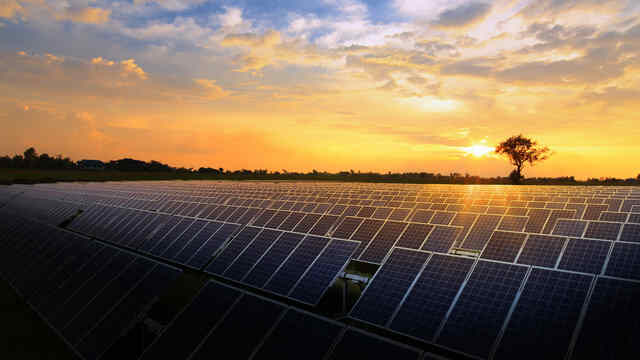Egypt’s Energy Solution: The Key to Ending Blackouts
Egypt’s Energy Solution, Egypt faces a growing energy crisis. Blackouts have become more frequent. Gas shortages and high import prices are putting immense pressure on the country’s grid. But there is a solution rising in the desert—Egypt solar and battery power.
With abundant sunshine and falling technology costs, Egypt has begun to shift its focus to renewable energy. One of the most ambitious projects, the Obelisk hybrid solar and battery plant, has just broken ground. This signals a major turning point in the country’s power strategy.
In this post, we’ll explore how Egypt solar and battery power can help fix the blackout crisis. We’ll look at real-life examples, explain how hybrid systems work, and offer insight into how Egypt—and other nations—can build energy resilience through renewables.
Egypt’s Energy Solution why Egypt Needs Solar and Battery Power Now
Blackouts and Energy Insecurity
At the same time, global gas prices are rising. Egypt now imports fuel to keep up with demand. In May and June 2024, the country issued a tender to import two million tons of fuel oil. This import dependency increases costs and adds financial stress.
Every summer, when temperatures soar above 42°C (108°F), electricity demand spikes. Air conditioners run nonstop. Without a stable power source, blackouts sweep across the nation.
Egypt’s Energy Solution Solar Energy Potential
Also, Egypt is rich in sunshine. The Global Solar Atlas ranks Egypt fourth in the world for solar PV potential. Much of the country lies within the so-called “magic solar belt”—ideal for solar development.
And yet, solar energy only made up 3% of Africa’s energy mix in 2023. Moreover, this is changing fast. In 2024, 75% of new solar projects in Africa were built in Egypt or South Africa. Egypt aims to boost its renewable share from 13% in 2023 to 42% by 2030.
This makes Egypt solar and battery power a timely and essential investment.
Egypt’s Energy Solution Real-World Example: The Obelisk Project
What Is Obelisk?
Also, Obelisk is Egypt’s first large-scale hybrid solar and battery power plant. It is under construction in Nagaa Hammadi, in southern Egypt. The project will generate 1.1 gigawatts of solar energy. It also includes 200 megawatt hours of battery storage.
Who Is Behind It?
Scatec, a renewable energy company from Norway, is leading the project. The company already runs four other renewable sites in Egypt. Obelisk is their largest so far.
The total cost is $590 million. Major funding comes from:
- The European Bank for Reconstruction and Development
- The African Development Bank
- British International Investment
Together, they are contributing $479.1 million in funding.
Timeline
The first 561 megawatts and full battery capacity will be online by mid-2026. Also, the full 1.1 gigawatt capacity is expected by the end of 2026.
Egypt’s Energy Solution How Egypt Solar and Battery Power Works
Why Not Just Solar?
Solar panels only produce electricity during the day. At night, energy demand still exists. This is where battery storage comes in.
Battery storage allows energy to be saved during sunny hours. It can then be used after sunset. This solves one of solar’s biggest problems: intermittency.
Battery Technology Today
Battery costs have dropped by 89% from 2010 to 2023. This is thanks to global production, especially in China. These falling costs make large-scale storage more affordable than ever before.
According to the Global Solar Council, battery storage is a major driver of new solar installations. With the right systems, Egypt solar and battery power can run around the clock.
Solar + Battery = Resilience
First of all, by combining solar and battery systems, Egypt gains three big advantages:
- Energy independence from imports
- Stable electricity during peak demand
- Protection from global fuel price swings
Karim Elgendy of the Carboun Institute says this hybrid model “can take away the primary weakness” of solar. It could serve as a blueprint for the rest of Africa and the world. More post like this you can find here.
Egypt’s Energy Solution Educational Section: How to Build a Solar and Battery System
Step 1: Choose the Right Location
The first step is site selection. Ideal areas have:
- High solar irradiance
- Low shading or cloud cover
- Close proximity to the grid
Southern Egypt, in the “magic solar belt,” is a perfect fit.
Step 2: Secure Funding
But these projects need large investments. Partnering with international banks helps reduce risk and cost. Egypt’s deal with European and African banks shows how to do it right.
Step 3: Design the Hybrid System
A successful hybrid system includes:
- Solar PV panels
- Battery storage units
- Inverters and controllers
- A smart grid connection
Engineering must be precise. The system should balance generation, storage, and distribution.
Step 4: Train and Employ Local Workers
Also, jobs must go to locals. Skills training boosts community support and long-term success. Scatec and others often work with governments to offer workforce development programs.
Step 5: Monitor and Improve
After installation, smart systems track performance. Also, this ensures uptime, efficiency, and proper energy distribution.
Egypt’s Energy Solution The Regional Impact
Egypt’s Energy Solution Egypt as a Solar Leader
With Obelisk and similar projects, Egypt could become a solar leader in the region. The country is already hosting climate summits and setting renewable targets. Its actions may encourage neighboring countries to follow suit.
African Solar Growth
In addition, Africa holds 60% of the world’s best land for solar. Yet only 3% of global energy investments reached the continent in 2024. Projects like Obelisk could shift investor confidence.
In 2025, over 18 African nations are expected to build 100 MW solar projects—up from just two in 2024.
Economic Over Environmental?
Many might assume Egypt’s move toward solar is environmental. But the real reason is economic. The country needs a cheaper, more predictable energy source. Solar delivers both.
As Karim Elgendy notes, Egypt solar and battery power is about avoiding costly fuel imports. It’s about predictability, not just climate goals.
But, still the environmental benefits are real. Less gas burning means cleaner air and fewer emissions.
Conclusion: A Brighter Future Through Solar
In addition, Egypt is taking bold steps to fix its blackout problem. The Obelisk project shows the power of combining solar energy with battery storage. With more than 1.1 gigawatts of solar and 200 MWh of storage, it could transform the region’s energy landscape.
The falling cost of batteries, combined with Egypt’s vast solar potential, makes this a logical path forward. And with proper investment, training, and infrastructure, Egypt could become a model for solar success.
Egypt solar and battery power is not just a short-term fix. It’s the foundation for energy independence, economic stability, and long-term sustainability.
Final Thoughts
Are you involved in energy policy, climate investment, or renewable development? Now is the time to support Egypt solar and battery power.
Invest in sustainable projects. Support solar education and training. And help shift global energy to a cleaner, more stable future.

